
How to Use STM32F0: Examples, Pinouts, and Specs
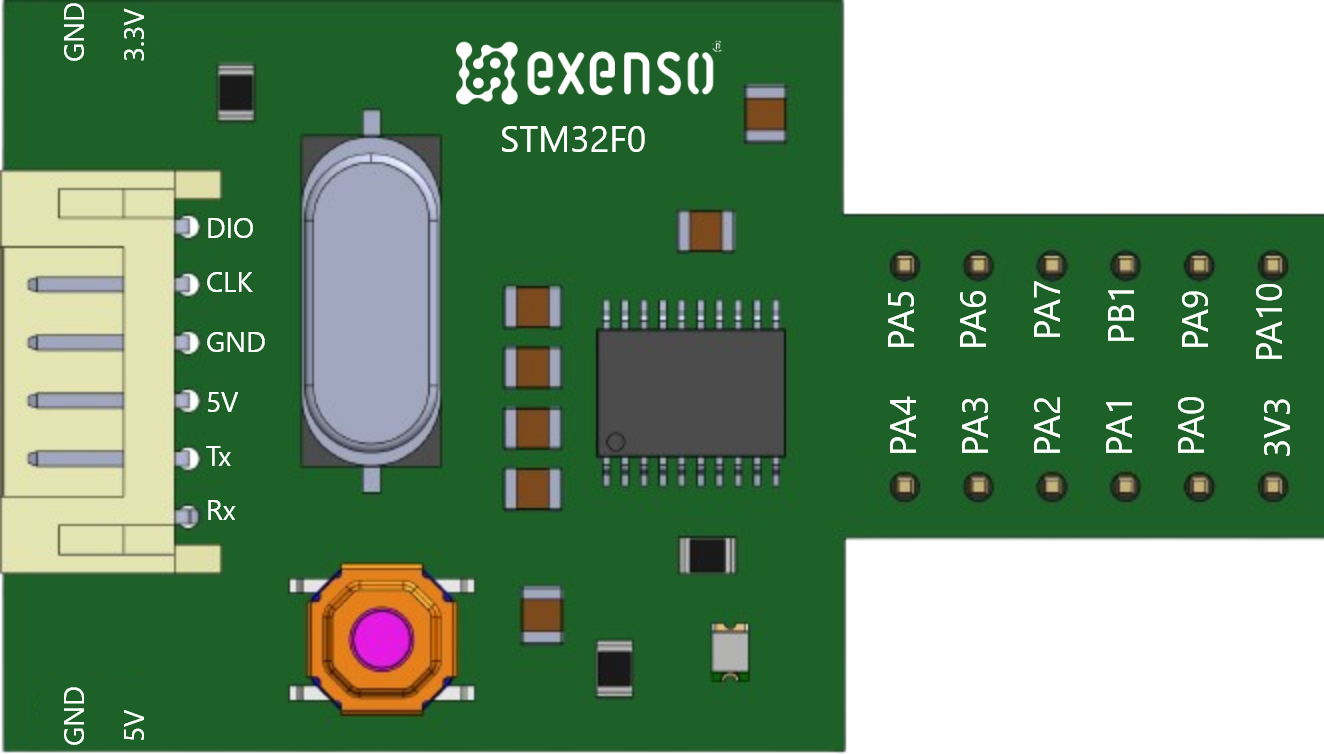
 Design with STM32F0 in Cirkit Designer
Design with STM32F0 in Cirkit DesignerIntroduction
The STM32F0 series represents a range of 32-bit microcontrollers designed around the ARM Cortex-M0 processor core. These microcontrollers are known for their balance of performance and power efficiency, which makes them an ideal choice for various embedded applications. Common use cases include industrial controls, consumer electronics, home automation, and medical devices.
Explore Projects Built with STM32F0
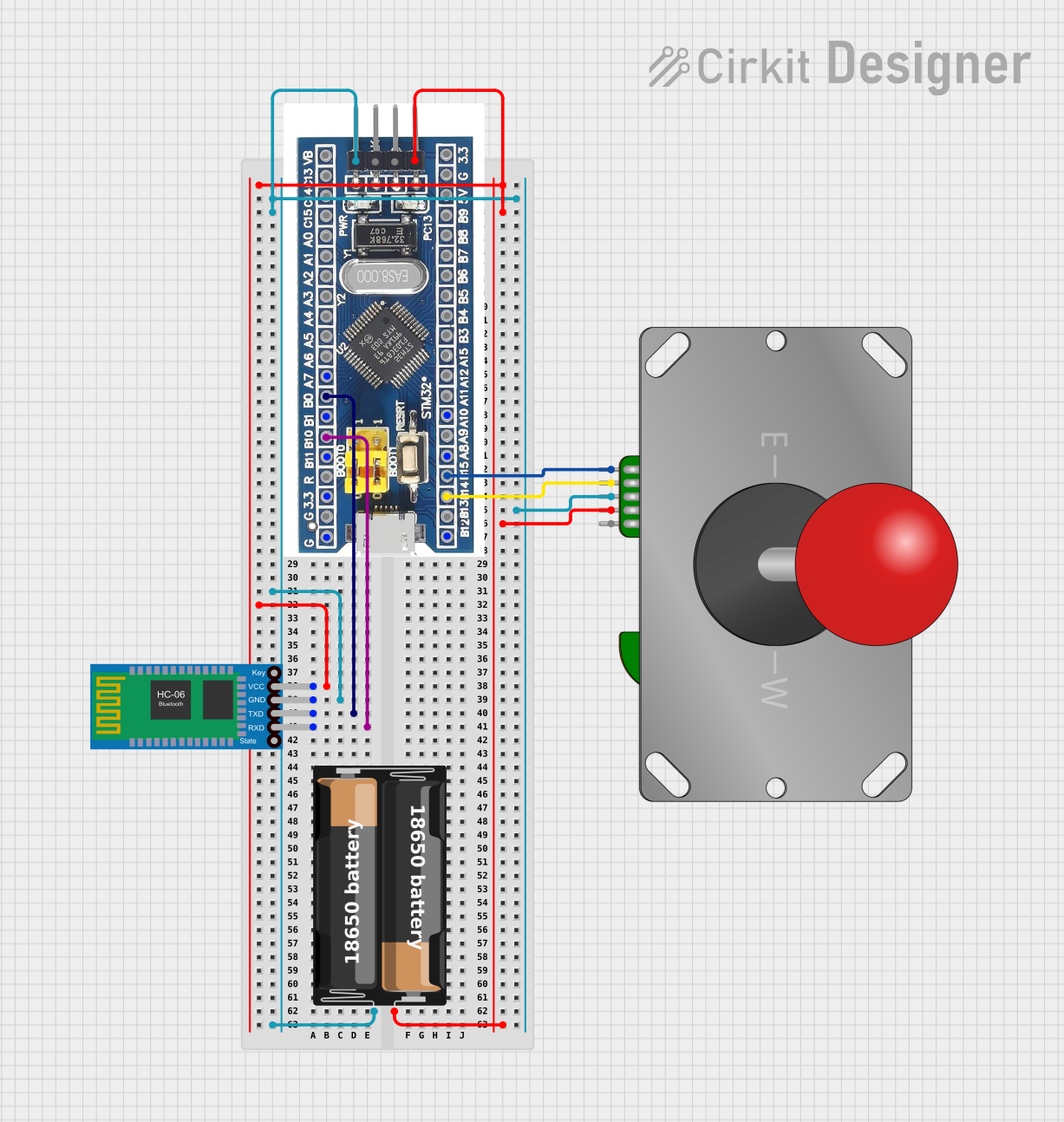
 Open Project in Cirkit Designer
Open Project in Cirkit Designer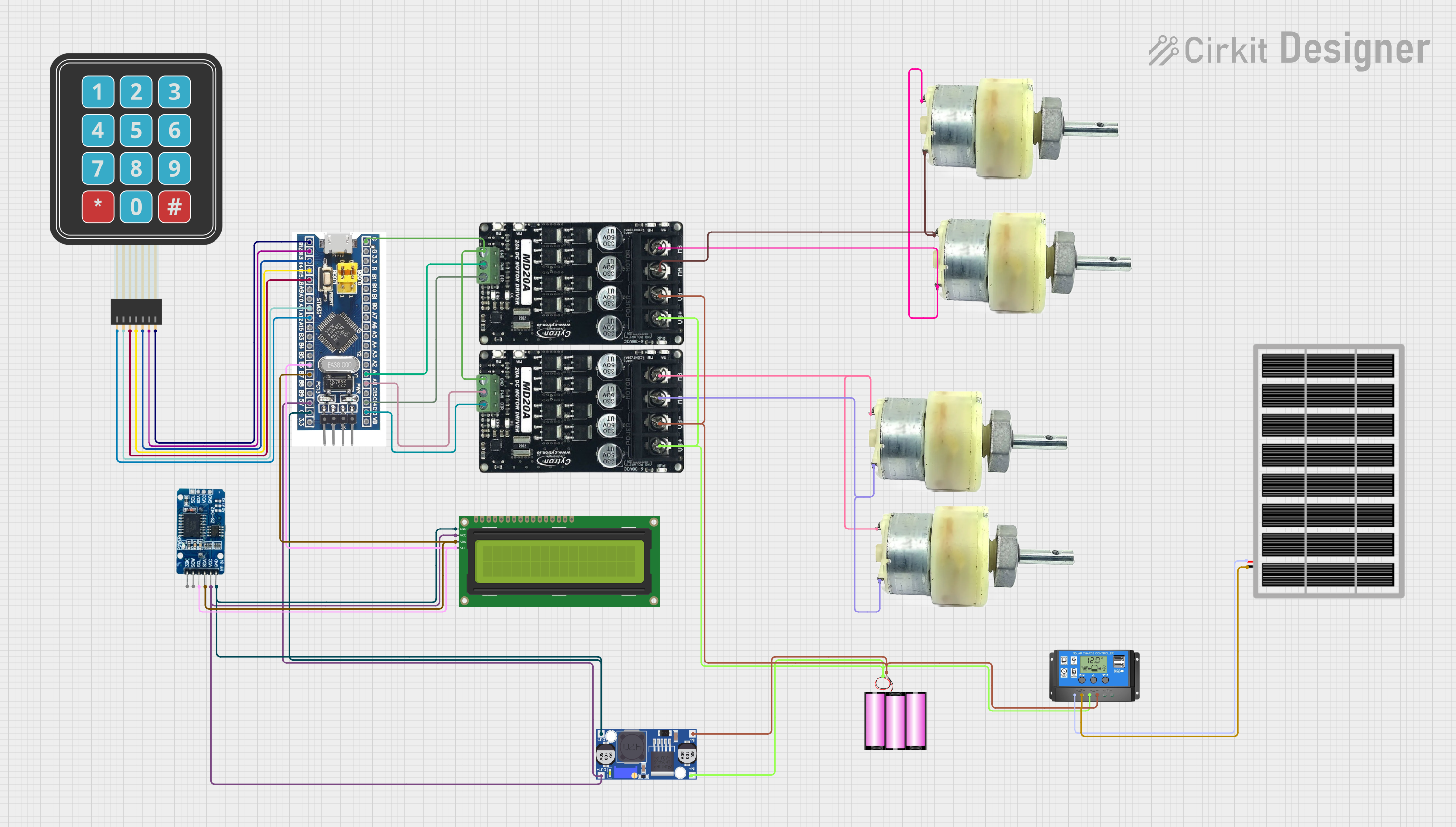
 Open Project in Cirkit Designer
Open Project in Cirkit Designer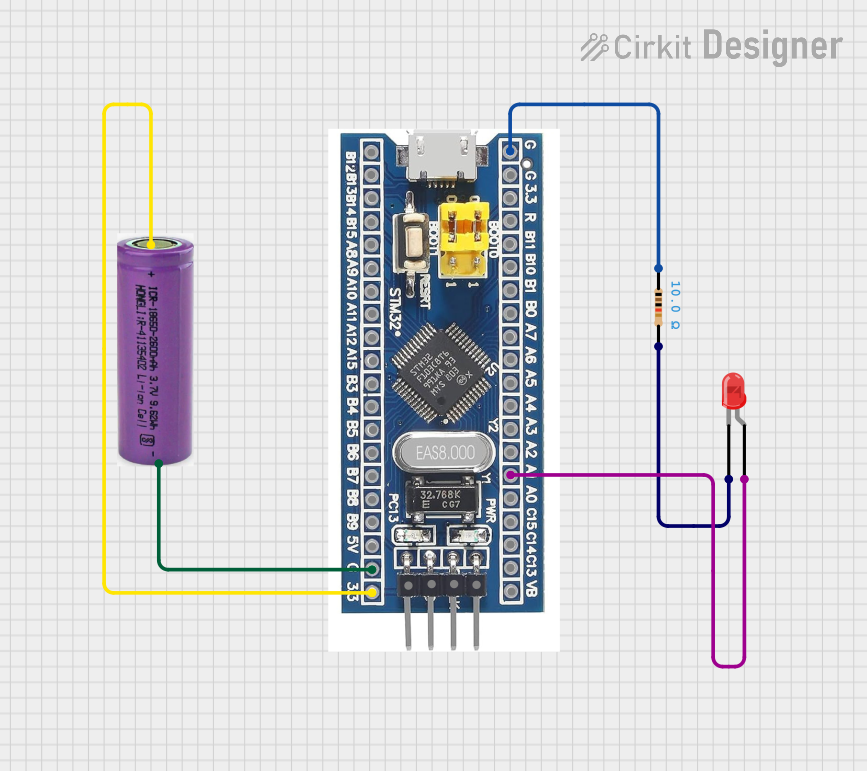
 Open Project in Cirkit Designer
Open Project in Cirkit Designer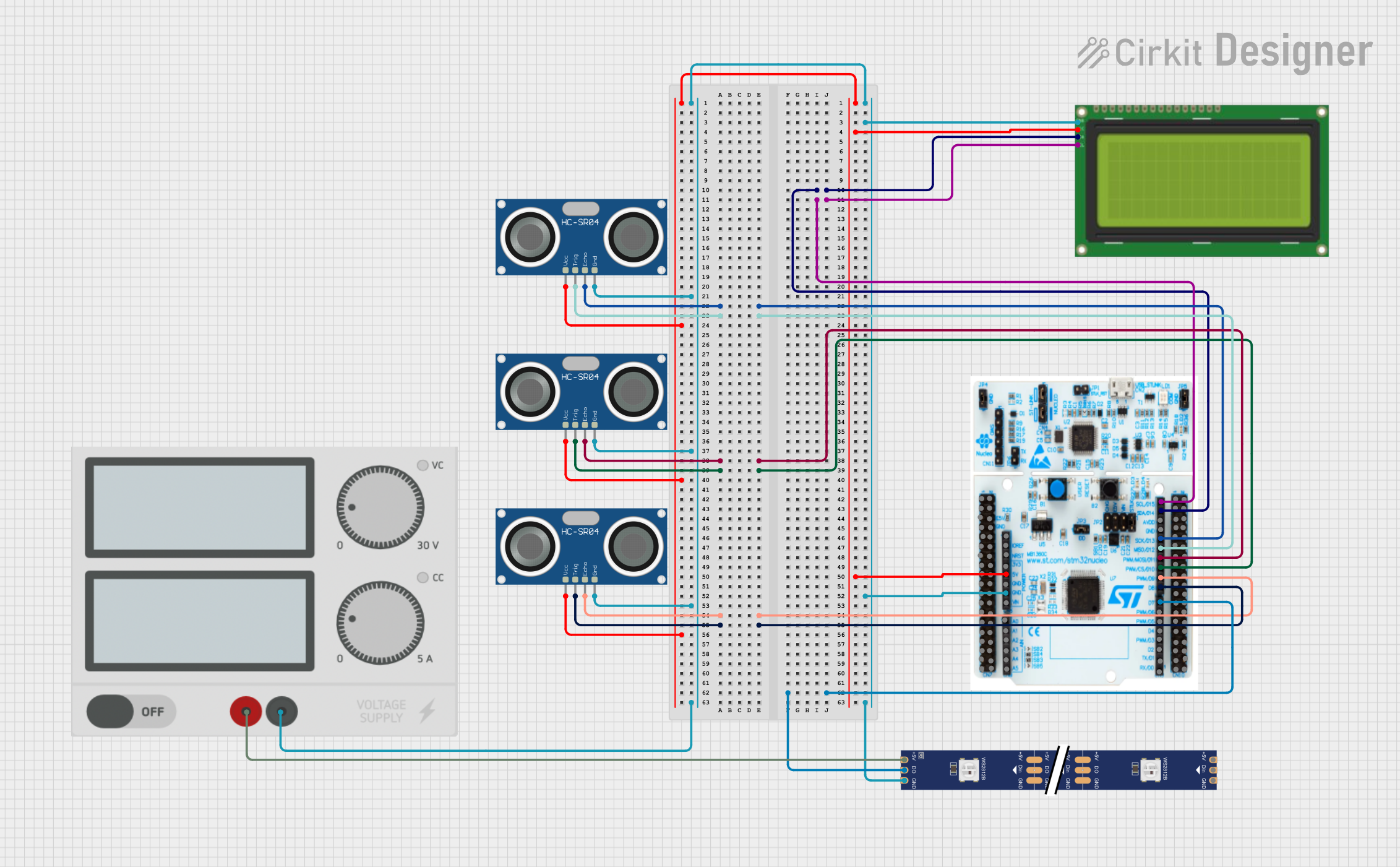
 Open Project in Cirkit Designer
Open Project in Cirkit DesignerExplore Projects Built with STM32F0

 Open Project in Cirkit Designer
Open Project in Cirkit Designer
 Open Project in Cirkit Designer
Open Project in Cirkit Designer
 Open Project in Cirkit Designer
Open Project in Cirkit Designer
 Open Project in Cirkit Designer
Open Project in Cirkit DesignerTechnical Specifications
Key Technical Details
- Core: ARM Cortex-M0 processor
- Operating Voltage: 2.0 V to 3.6 V
- I/O Pins: Up to 80 GPIOs with various multiplexed functions
- Clock Frequency: Up to 48 MHz
- Flash Memory: Up to 256 KB (depending on the model)
- SRAM: Up to 32 KB (depending on the model)
- Timers: Multiple 16-bit and 32-bit timers
- Communication Interfaces: I2C, SPI, UART, CAN, USB
- Analog: Up to 16-channel 12-bit ADC, DAC
- Debugging: Serial Wire Debug (SWD)
Pin Configuration and Descriptions
| Pin Number | Name | Description |
|---|---|---|
| 1 | VDD | Power supply |
| 2 | VSS | Ground reference |
| 3 | NRST | Reset input |
| ... | ... | ... |
| n | VBAT | Battery backup for RTC |
Note: The pin configuration varies by package and model. Refer to the specific datasheet for your STM32F0 model for the complete pinout.
Usage Instructions
Integrating STM32F0 into a Circuit
- Power Supply: Connect a regulated power source to the VDD pins and ground to the VSS pins. Ensure the voltage is within the specified range.
- Clock Source: Configure the clock source. You can use an external crystal or the internal oscillator.
- Programming: Use the SWD interface for programming the microcontroller.
- I/O Configuration: Set up the GPIO pins according to your application's needs, considering the multiplexed functions.
Best Practices
- Use bypass capacitors near the power supply pins to filter noise.
- Implement proper ESD protection for all I/O pins.
- Follow the guidelines for PCB layout, including trace impedance control and thermal management.
- Ensure firmware is developed with proper consideration for interrupt handling and low-power modes.
Troubleshooting and FAQs
Common Issues
- Microcontroller not responding: Verify the power supply, check for proper clock configuration, and ensure the SWD interface is correctly connected.
- I/O malfunction: Check the pin configuration and ensure that the GPIOs are not being overloaded.
- Unexpected resets: Monitor the voltage levels to rule out power supply issues and check for any watchdog timer misconfigurations.
FAQs
Q: How do I program the STM32F0? A: You can program it using the SWD interface with tools like ST-Link or a compatible programmer/debugger.
Q: Can the STM32F0 series operate in low-power modes? A: Yes, the STM32F0 series has several low-power modes to reduce power consumption during idle periods.
Q: What development environments are compatible with STM32F0? A: Various environments like STM32CubeIDE, Keil MDK, IAR EWARM, and others that support ARM Cortex-M development.
For more detailed troubleshooting, refer to the manufacturer's documentation and community forums.
Example Code for Arduino UNO Interfacing
// Example code for interfacing STM32F0 with Arduino UNO via UART
#include <SoftwareSerial.h>
SoftwareSerial stm32Serial(10, 11); // RX, TX
void setup() {
// Start the hardware serial communication
Serial.begin(9600);
// Start the software serial communication
stm32Serial.begin(9600);
Serial.println("STM32F0 UART Interface Example");
}
void loop() {
if (stm32Serial.available()) {
// Read data from STM32F0
char data = stm32Serial.read();
// Send the data to the Serial Monitor
Serial.print(data);
}
if (Serial.available()) {
// Read data from Serial Monitor
char data = Serial.read();
// Send the data to the STM32F0
stm32Serial.write(data);
}
}
Note: This example assumes that the STM32F0 has been programmed to communicate via UART. The pins 10 and 11 on the Arduino UNO are used for software serial communication.
Remember to consult the STM32F0 reference manual and datasheets for specific details on programming and interfacing with other devices.